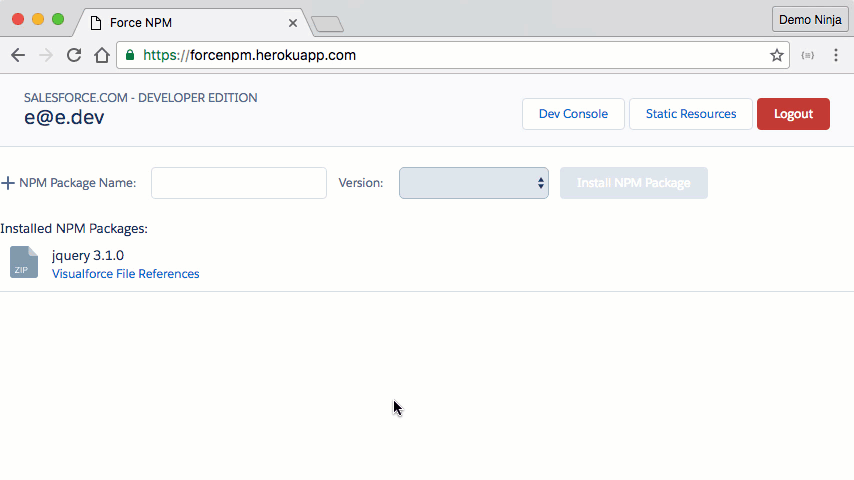Force.com
Quick Force Java – Getting Started with Salesforce REST in Java
Recently I blogged about a toolchain that quickly gets you going with the Salesforce REST APIs. I believe developers should be able to get started with new technologies without having to install tons of stuff and struggle for days. That blog used Quick Force Node for those who want to use JavaScript / Node.js. I’ve had a number of requests for a Java version of this toolchain so I created Quick Force Java.
Salesforce REST APIs – From Zero to Cloud to Local Dev in Minutes
When getting acquainted with new technologies I believe that users shouldn’t have to spend more than 15 minutes getting something simple up and running. I wanted to apply this idea to building an app on the Salesforce REST APIs so I built Quick Force (Node). In about 12 minutes you can deploy a Node.js app on Heroku that uses the Salesforce REST APIs, setup OAuth, then pull the app down to your local machine, make and test changes, and then redeploy those changes. Check out a video walkthrough:
Dreamforce 2015 Video: Tour of Heroku + Salesforce Integration Methods
This year at Dreamforce I presented a session that walked through a few of the ways to integrate Heroku apps with Salesforce. Here is the session description:
Combining customer-facing apps on Heroku with employee-facing apps on Salesforce enables a whole new generation of connected and intelligent experiences. There are four primary ways to do this integration: Heroku Connect, Canvas, Apex / Process Callouts, and the Salesforce REST APIs. Using code and architectural examples, we’ll walk through these different methods. You will walk away knowing when you should use each and how to use them.
Introducing Force WebJars: Add JavaScript Libs to Salesforce With a Click
The typical method of adding JavaScript and CSS libraries (e.g. jQuery, Bootstrap, and AngularJS) to Salesforce environments is to locate a library’s download, download it, then upload it to Salesforce, then figure out the structure of the files so that you can use them from Visualforce. Using WebJars as a basis, I’ve created an easy way to add libraries to Salesforce, called Force WebJars.
Here is a quick demo:
Give it a try and let me know how it goes!
Dreamforce 2012: Java Apps on Heroku & Force.com
Dreamforce 2012 is going to be a fantastic event! And not just because Red Hot Chili Peppers, Colin Powell, and Richard Branson will be there. I’ll also be there talking about Building Java Apps on Heroku and Force.com. Here is the description for my session:
In this session you will learn how to build Social Enterprise applications using Salesforce, Heroku, and Java. Through live coding and demonstrations you will learn how to instantly deploy and scale Java apps on the cloud with Heroku. You will also learn how to integrate those applications with Salesforce and Force.com through REST.
Integrating Java Spring Apps on Heroku with Force.com REST APIs
Recently I co-presented a webinar about how to integrate Java Spring Apps on Heroku with the Force.com / Salesforce.com REST APIs. Check out the recording:
I’ve also created an in-depth walk through of the code example and step-by-step instructions for setting up and deploying the example Java Spring app on Heroku. Check it out and let me know how it goes.
Seattle Force.com Developer Meetup on June 22
UPDATE: This event has been canceled! Sorry!
Next week I’ll be presenting in Seattle at my first Force.com Developer Meetup! It starts at 6pm on Wednesday, June 22. My session will be on Flex Mobile Development. Other sessions include Force.com Platform Basics, Native iOS Development using JavaScript, and a Force.com Hands-On Lab. It’s going to be a fun evening, so if you are in the Seattle area, then I hope to see you there!
